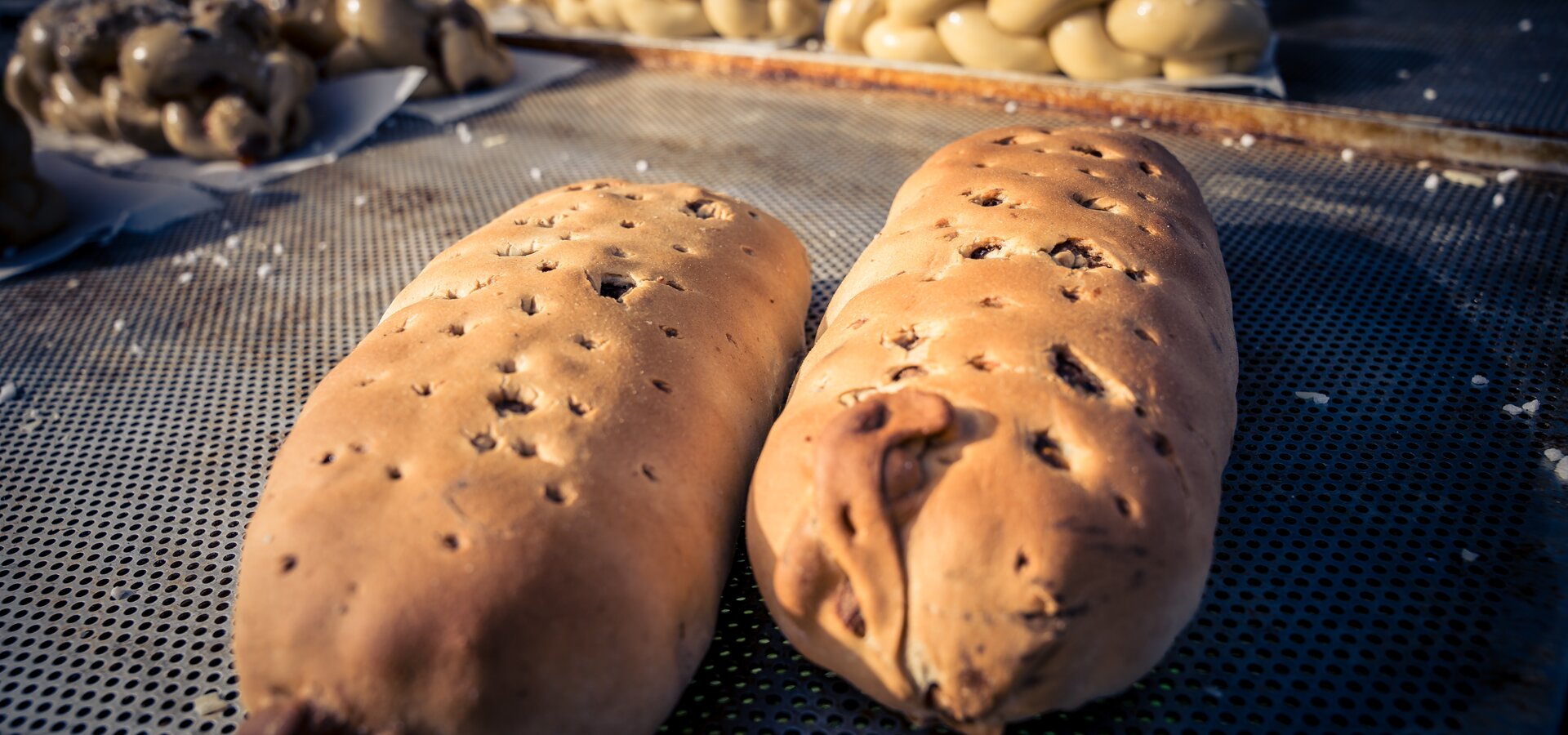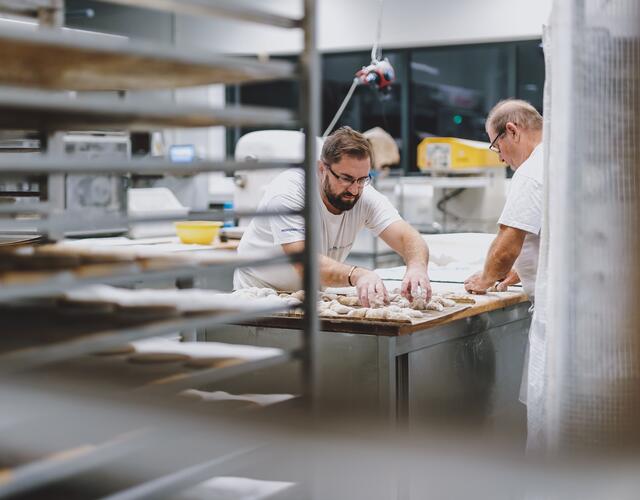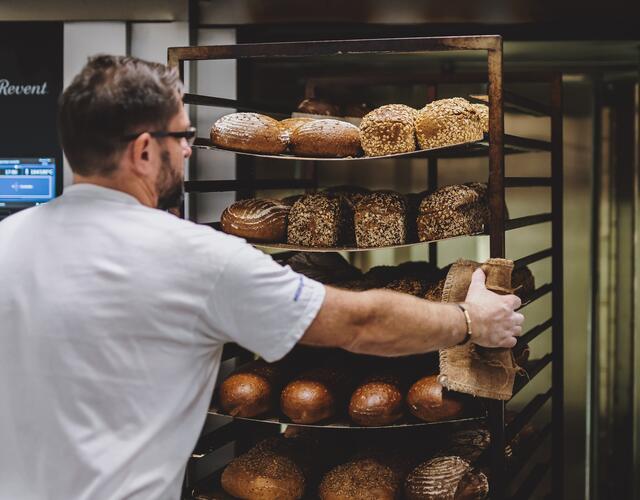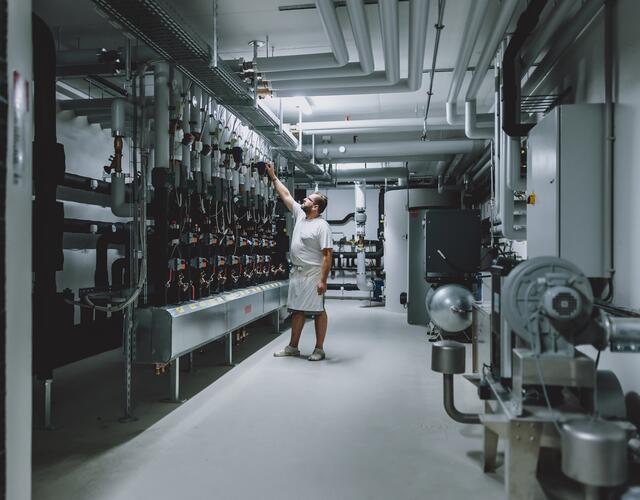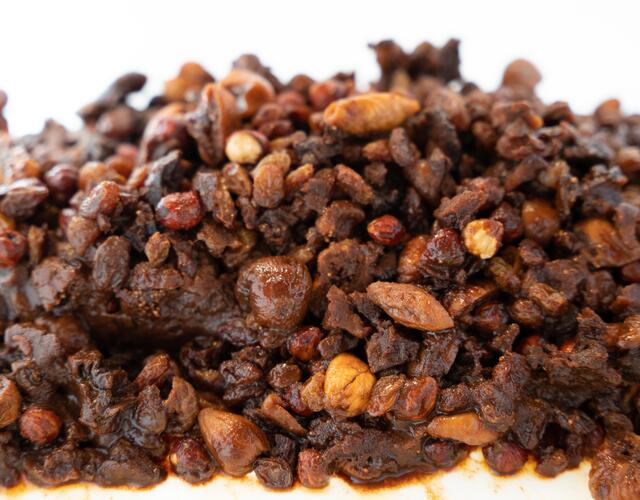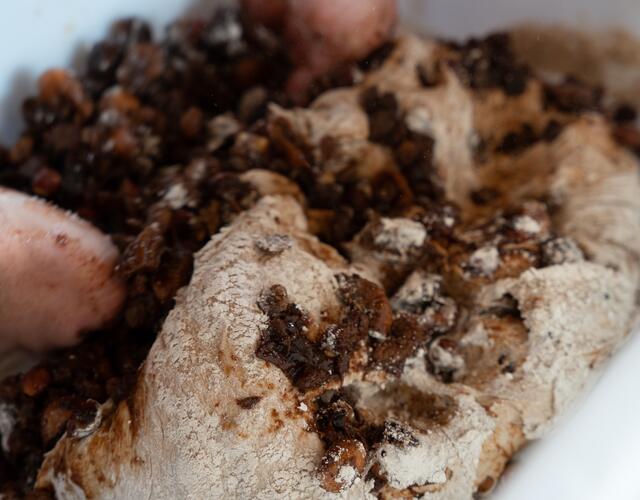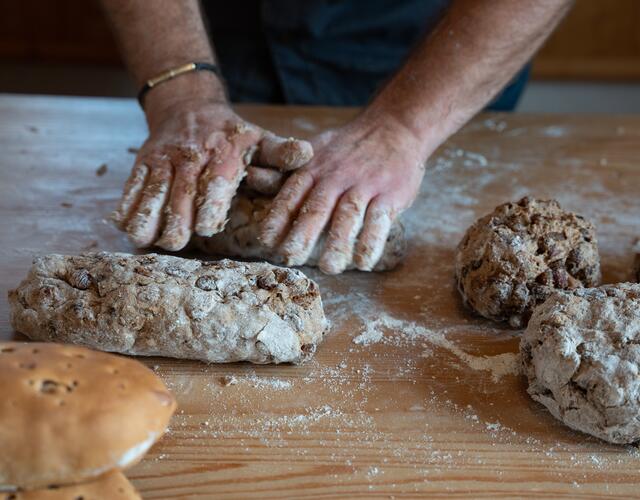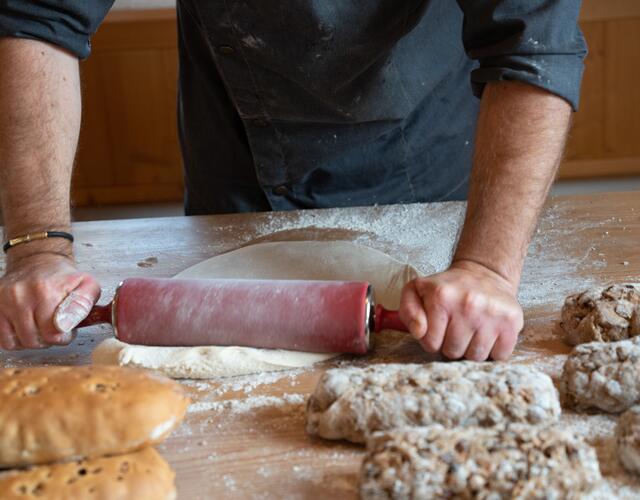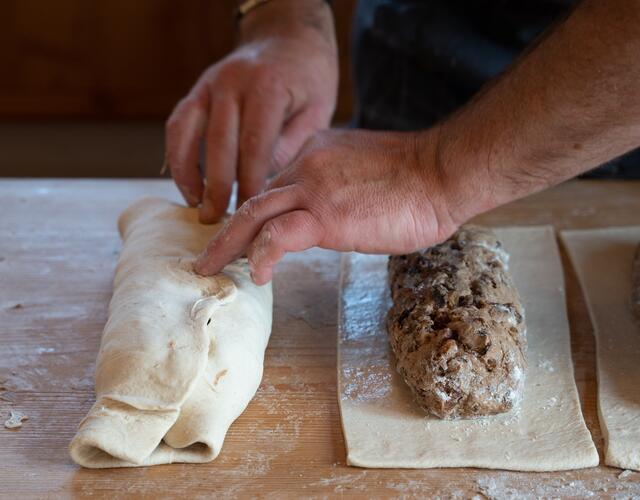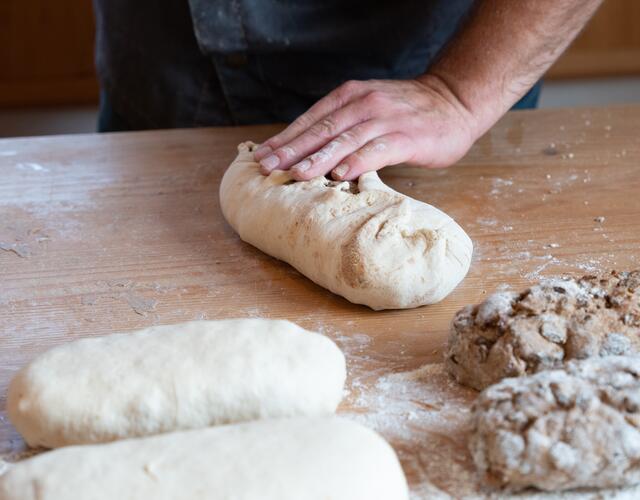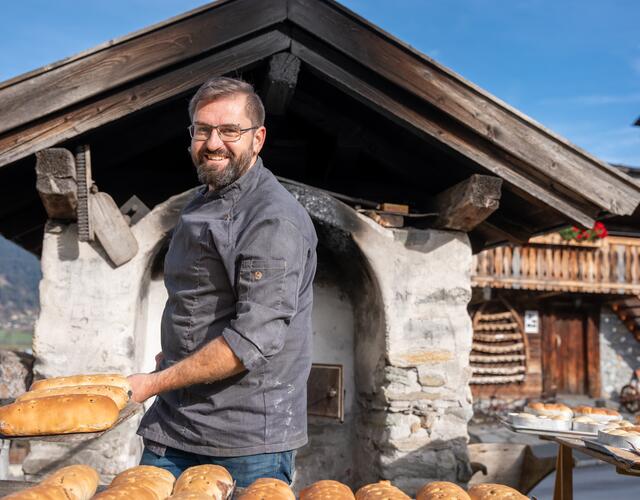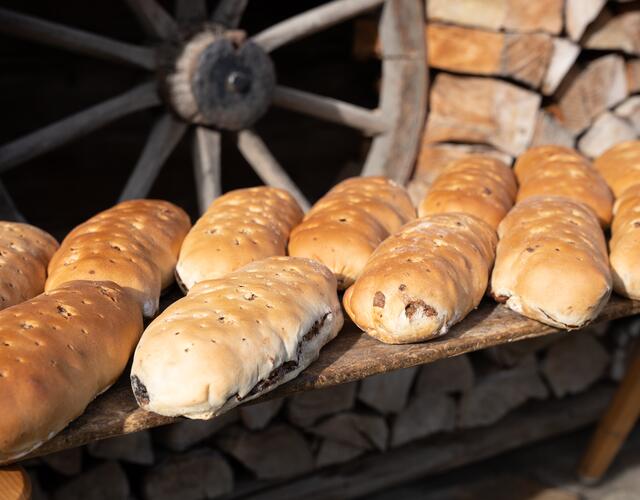Katschner's Fruit Bread
Enjoyment without feeling guilty (about climate change) is at the top of the Katschner bakery's daily agenda. Guenther Katschner has committed himself to sustainable baking and been awarded a certificate for carbon neutrality in his newly built bakeshop. Katschner not only delivers fresh bread and pastry to the Kitzsteinhorn, but also sends pre-Christmas delicacies during the Advent.
Smells like Christmas. After making turns on fresh glacier snow comes recharging the batteries in the Restaurant Gletschermuehle on 2,450 meters above sea level. Here, the kitchen crew cooks with local products and creates dishes like creamy chestnut soup with fruit bread from the Katschner bakery. And nothing smells more like Christmas than fresh fruit bread.
Carbon neutral production
We visit Guenter Katschner in his new bakeshop to sneak a peek at his secret recipe book. The master baker placed great importance on ecological construction of his bakeshop and sales areas, for which he was eventually awarded a certificate for carbon neutrality. He tells: "We produce our bread and pastry 100% carbon neutral. Solar panels on our roof produce green electricity and we recover waste heat from our cooling systems. A ground source heat pump heats the building in winter and cools it in summer. Two of our three delivery vans with which we supply our local partners are already electric-powered."
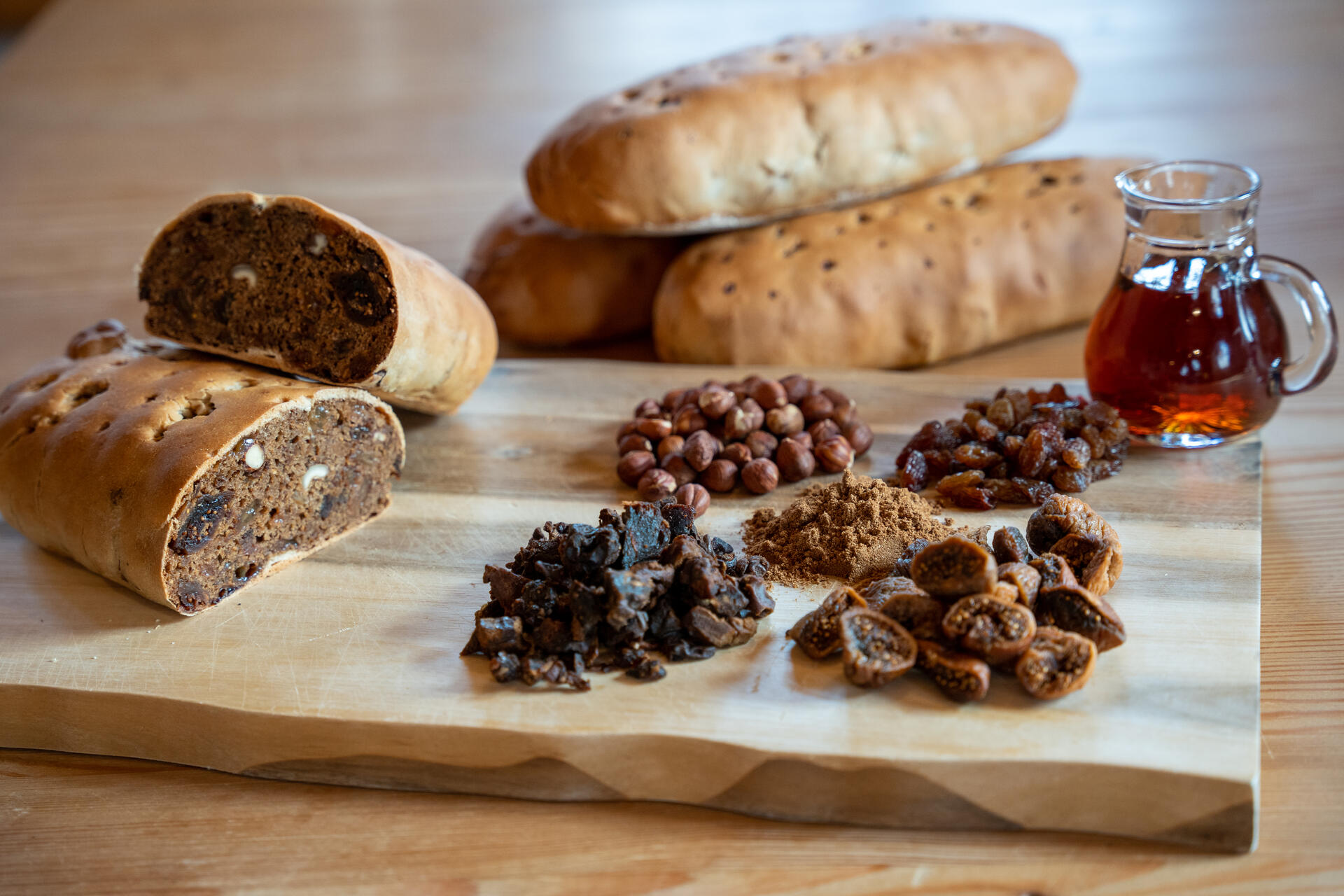
Just don't hurry.
Guenther Katschner knows exactly what he wants and continues to follow his chosen path. And although the innovative way is not always the quickest, the time it takes to go it is certainly wisely invested. Patience and local products are essential ingredients for his success, Guenther explains: "Bread quality is extremely important to me. In that respect, local products are key. I know my egg supplier and the miller from the state of Salzburg personally and know exactly where he gets his grain from – the Tauern rye, for instance, from Lungau, which Waltraud Flatscher grinds for me in Kaprun. As far as patience is concerned when making bread, the dough needs time to rest. During this time, the delicious taste moves from the crust deep into the bread loaf; also, the bread becomes more easily digestible." This also holds true for fruit bread: "Don't save on good ingredients and time, for around 60% of fruit bread stuffing consists of fruits that have to soak in rum for up to two days. For me, Christmas time begins the moment we bake our first fruit bread. I wish everyone fun recreating it." And those who prefer getting served, visit the Restaurant Gletschermuehle and enjoy a chestnut soup with fruit bread until early January.
We produce our bread and pastry 100% carbon neutral.
Recipe for Katschner's Fruit Bread
INGREDIENTS
for the fruit mix (to be prepared the day prior)
- 300 g raisings
- 200 g figs, cut
- 300 g dried pears
- 200 g hazelnuts
- 30 g fruit bread flavoring (cinnamon, fennel, coriander, nutmeg, pimento, star anise, ginger, cloves)
- 300 g rum
TIP: Remember Katschner's rule for making excellent bread: Don't hurry. So, mix all the ingredients together and let them rest at room temperature for at least 24 hours.
for the dough
- 400 g water, warm (approx. 35 °C)
- 275 g Tauern rye wholegrain flour (alternatively, wholegrain rye flour)
- 275 g Laufener Landweizen Vollkornmehl (alternatively, whole-wheat flour)
- 20 g salt
- 40 g fresh yeast
- 120 g rye sourdough (to be prepared the day prior: mix 20 g active sourdough starter + 50 g warm water, cover and let rest for 18 to 24 hours at room temperature)
INSTRUCTIONS
- For the dough, knead all ingredients to form a semi-firm mass. (No flour is like another; therefore, you might need to add flour or water while preparing the dough.)
- Remember: Put aside 250 g of the dough for wrapping the rolls.
- Gently mix the fruit mix with the remaining dough for 4 minutes.
- Divide the dough into 4 equal pieces.
- Form dough pieces first into round, then into longish rolls.
- Take the 250 g of the dough you put aside before and roll it out super-thin on a floured surface.
- Brush the rolled-out dough gently with water and place the little rolls on it leaving enough dough for wrapping.
- Brush the rolls with some water and wrap up gently.
- Put parchment paper on a baking sheet, place the rolls on it, cover with cloth and let sit for 45 minutes.
- Preheat oven to 200 °C (convection setting).
- After dough rest period, dock the dough with a fork.
- Prepare a little glass of water (0.1 l) for the oven.
- Brush the rolls with water, put them in the oven and simultaneously pour the water onto the bottom of the oven (not onto the baking sheet) and shut the door quickly.
- The bread is ready after approx. 40 minutes. But – no oven is like another. Check the bread color regularly as well as internal temperature with a thermometer. The bread is fully-cooked when internal temperature reaches 96 °C.

